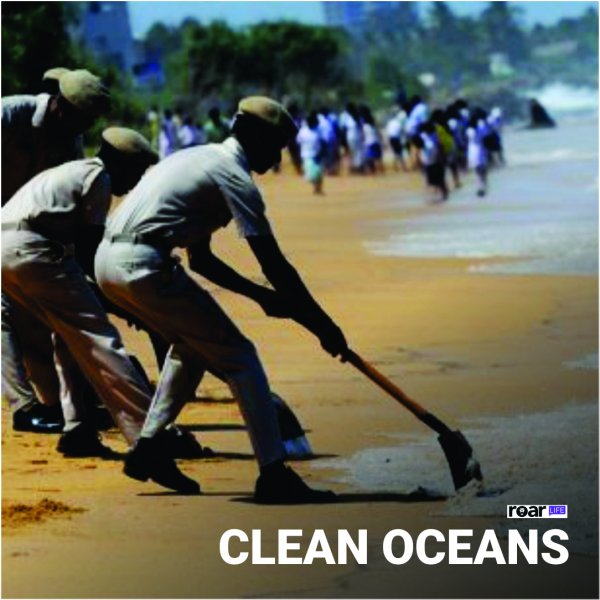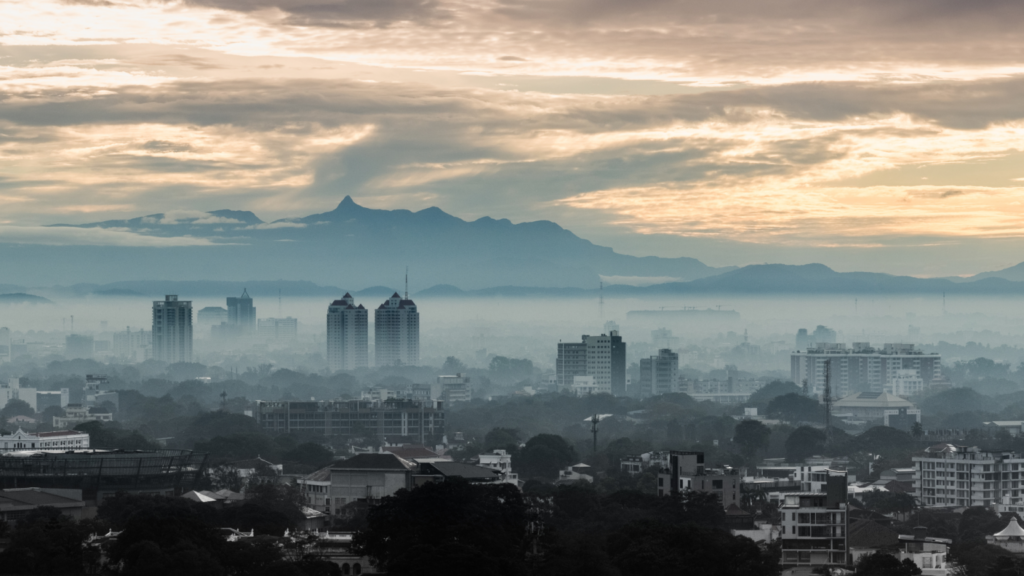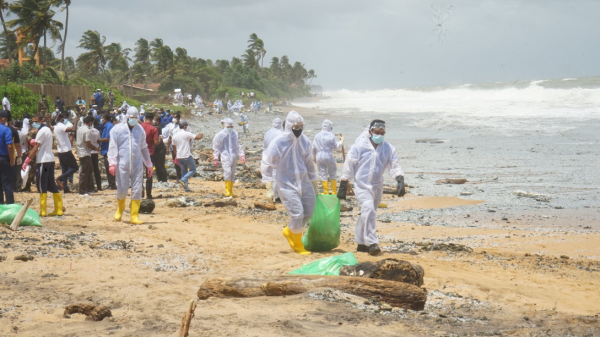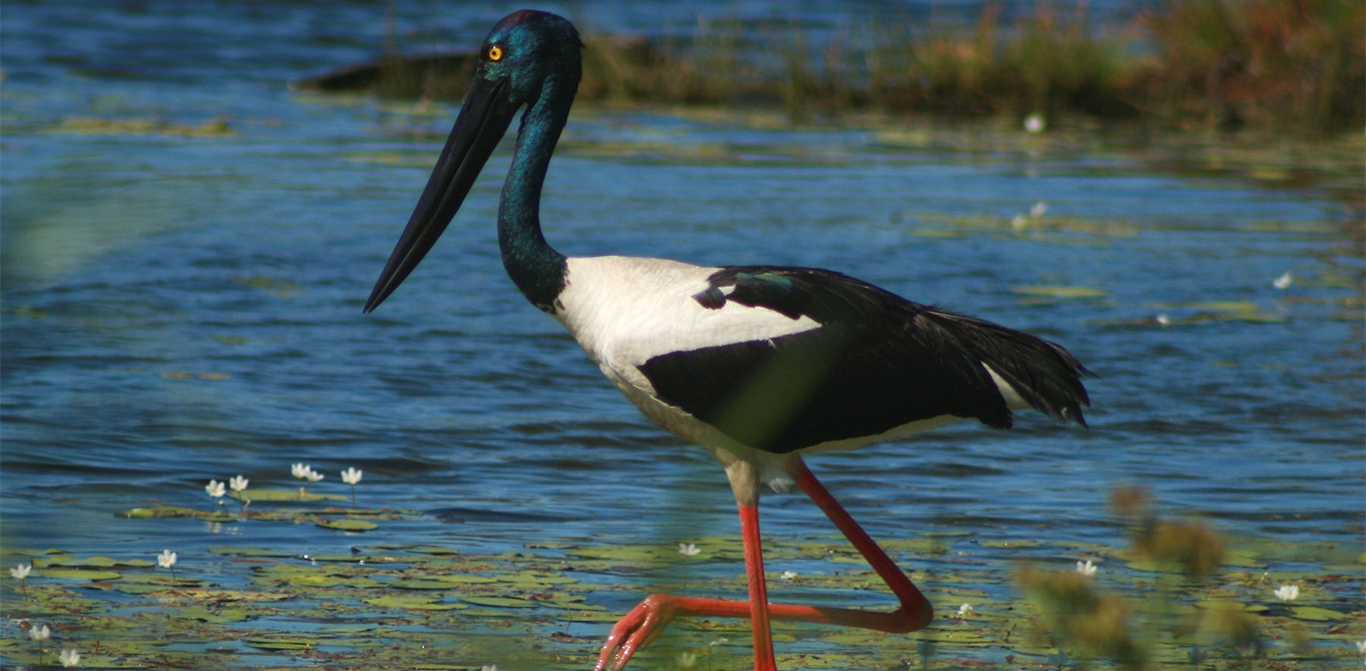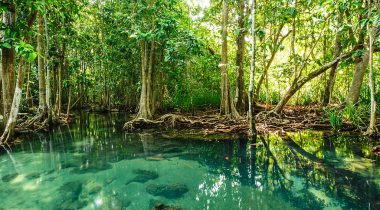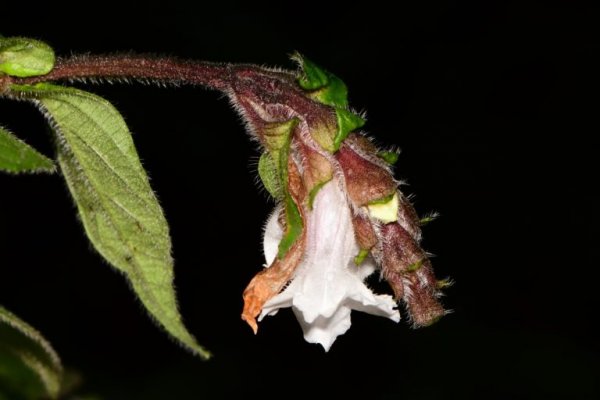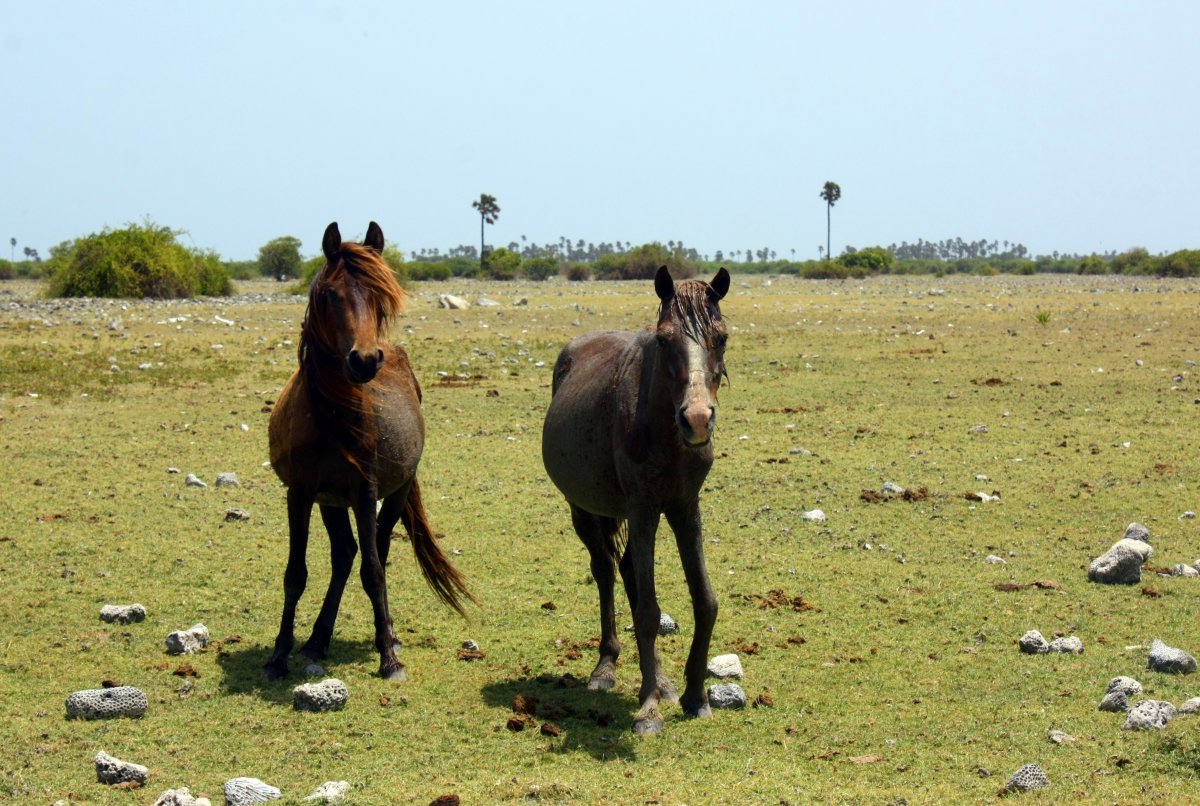
Sri Lanka has diverse landscapes; beautiful beaches, rolling teas estates, verdant rainforests and archeological ruins considered world heritage sites. We are also known for our wildlife—in fact, Sri Lanka is ranked among the 34 biodiversity hotspots of the world, and has rich species of flora and fauna. The more popular national parks—Yala, in the Southern/Uva province, Wilpattu, in the North Central/North Western province, and Udawalawe, in the Sabaragamuwa/Uva province, are known to local and foreign tourist alike, but Sri Lanka has a total 14 national parks; in fact, 13% of Sri lanka’s land surface is designated Wildlife Protected Areas (WPA), exceeding a total area of 8500 km2. Here are some of the lesser known national parks in Sri Lanka:
Adam’s Bridge Marine National Park
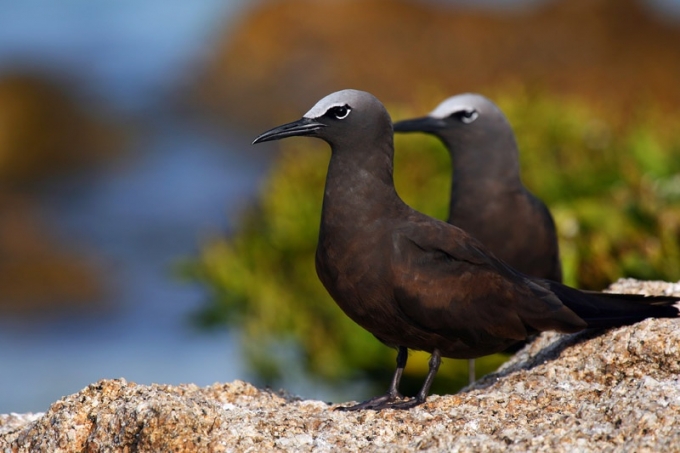
Researchers discovered that the migratory ‘brown noddy’ is a resident breeder at the Adam’s Bridge National Park. Image courtesy Pinterest
The Adam’s Bridge National Park is located on the chain of limestone shoals between Pamban Island off Tamil Nadu and Mannar Island, off the north-western coast of Sri Lanka. While the Sri Lankan end of the bridge forms the Adam’s Bridge National Park, the Indian end forms the Gulf of Mannar Marine National Park. The area of 18,990 ha (46,925 acres) on Adam’s Bridge was declared a national park on June 22, 2015, after an Integrated Strategic Environmental Assessment of Northern Province in October 2014 revealed Adam’s Bridge was an important bird migratory path and a marine conservation area. According to biologists, the area is used by thousands of seabirds for breeding, including seven species of terns (six endangered) and the brown noddy, which was thought to be a migratory bird. Other varieties of fish and sea grasses thrive in the shallow waters, including creatures like the dolphin, dugong and turtle.
Galway’s Land National Park

The park is named after a British officer who bequeathed the land as a sanctuary. Image courtesy timeout.com
The Galway’s Land National Park is situated within the city limits of Nuwara Eliya, in the Central province, and overlooks the landmark Gregory’s Lake. It is named after a British officer Colonel Galway, who was gifted the land for cultivation. Colonel Galway, having been entranced by the natural forest area and its teeming wildlife, preserved it, and gifted it back in 1938 “for the sake of the unknown generations of the Ceylonese”. The park, which covers an area of 27 hectares (0.10 sq mi), was declared a wildlife sanctuary on May 27, 1938, and elevated to the status of national park on May 18, 2006. It is home to a variety of flora and habitat to numerous fauna, and is also an important birding site. Access to the park is from Nuwara Eliya, on the Udupussellawa road, and there are a number of eco-lodges and other places to stay at in the vicinity.
Pigeon Island National Park
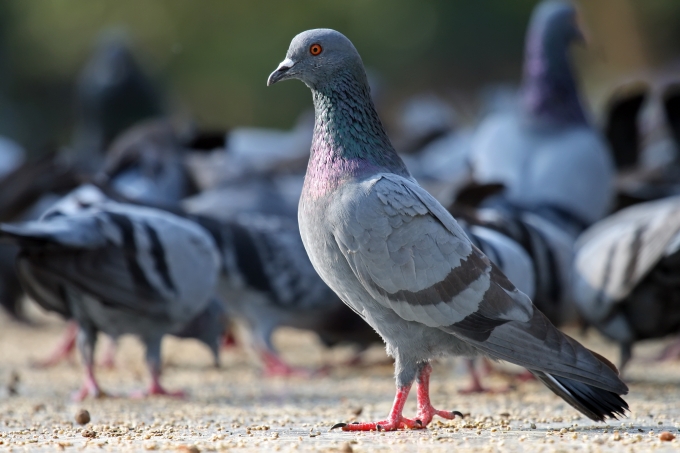
Pigeon Island is so known for the number of rock pigeons that have settled there. Image courtesy wikipedia
The Pigeon Island National Park is located on two islands (Large Pigeon Island and Small Pigeon Island), 1 kilometer off the Nilaveli coast, in the Eastern province. The islands are known as the ‘Pigeon Islands’ because of the concentration of rock pigeons found there. Rumour has it the two island were once a colonial shooting range. The islands are connected by a sand bank and fringed by a coral reef in which many species of coral and coral reef fish are found. The islands were designated a sanctuary in 1963 and elevated to status of national park in 2003. Blacktip reef shark have been spotted in the shallow areas around the island, and a variety of other sea creatures—ornamental fish, Hawksbill turtle, green turtle and olive ridley, count among those that can be found there. Pigeon Island was cut off from the public during the war, but has seen increased tourism since the war ended in 2009.
Delft National Park
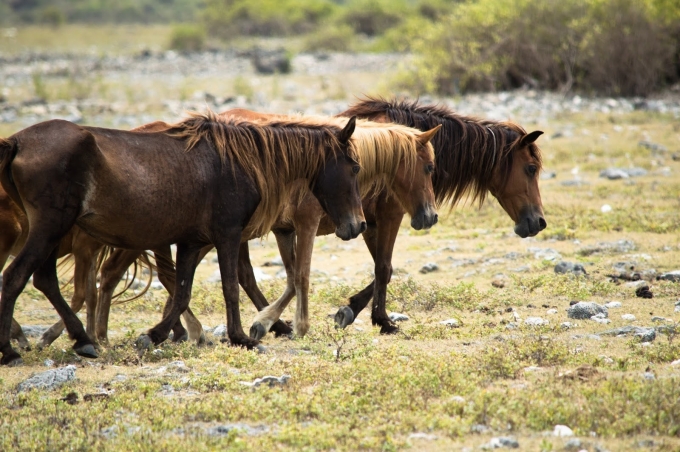
Wild ponies Image courtesy uplist.lk
The Delft National Park is unique in that it is the only place in Sri Lanka where wild ponies breed. These wild ponies are believed to have been brought to the island by the Portuguese in the 16th century. The Delft National Park is on the island known in Tamil as Neduntivu, although the Dutch name, Delft, is more popular. The island is approximately 35 km south west of Jaffna, in the Northern province, and was declared a national park on June 22, 2015, after an Integrated Strategic Environmental Assessment of the Northern province recommended that an area of 1,846 ha (4,562 acres) on the island be set aside for preservation. The island is inhabited by a small community of people and is surrounded by white beaches and corals and shallow waters. Over 60 species of birds and a multitude of butterfly species can be spotted in the Delft National Park, in addition to several other sights, including the ruins of ancient stupas.
Flood Plains National Park
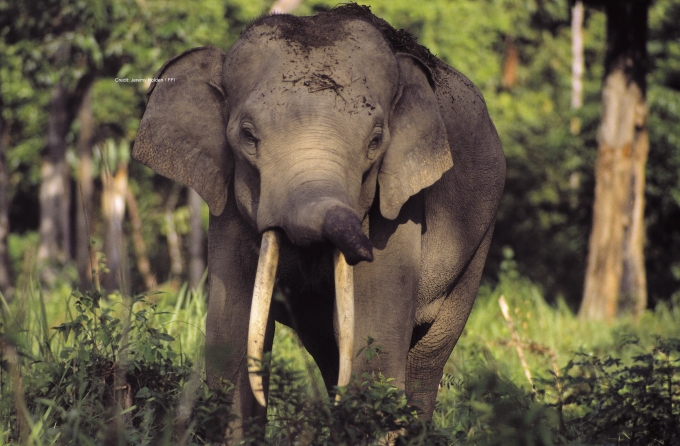
The Flood Plains National Park is an important feeding ground for elephants. Image courtesy elephant.siyaset.us
Flood Plains National Park is situated along the Mahaweli flood plain, 222 kilometres north-east of Colombo, in the North Central province. It is made up of rivers, marshes, villus, seasonally flooded grasslands and swamp forests, and is an important habitat for elephants. In fact, the area, that was declared a national park on August 7, 1984, is also considered an elephant corridor, which elephants use to migrate between other national parks. The park is also home to a number of large mammals such as the fishing, jungle and rusty-spotted cats, jackals, wild boar, sambar, spotted deer, buffalo and even the leopard. There is also a wide variety of resident and migratory waterfowls, as well as exotic and endemic freshwater fish. There is also a high diversity of both small and large plant species—over 231 have been recorded from the Handapan and Bendiya villus and marsh forests contained within the park.
Chundikkulam National Park

Mugger and saltwater crocodiles have been spotted at the Chundikkulam National Park . Image courtesy antasticaanimal.blogspot.com
The Chundikkulam National Park is located 12 km north east of Kilinochchi, in the Northern province. The area includes the Chundikkulam Lagoon (sometimes called the Elephant Pass Lagoon), to which a variety of birds flock. The area was designated a bird sanctuary on February 25, 1938 and was only elevated to the status of national park on June 22, 2015, after an Integrated Strategic Environmental Assessment of Northern province recommended an area of 19,565 ha (48,347 acres) is preserved, an increase of 8,416 ha from the sanctuary’s previous 11,149 ha. Water and wader birds—including the bar-tailed godwit, brown-headed gull, curlew sandpiper, eurasian spoonbill, greater flamingo and painted stork are found at the Chundikkulam National Park, as well as mugger and saltwater crocodiles.
Information on how to access these parks, entrance tickets and places to stay nearby can be obtained by contacting the Visitor Services Management Division of the Department of Wildlife Conservation on the number listed on their website.
Cover: Wild ponies, brought to Sri Lanka by the Portuguese in the 16th century, breed exclusively at the Delft National Park. Image courtesy wikipedia
